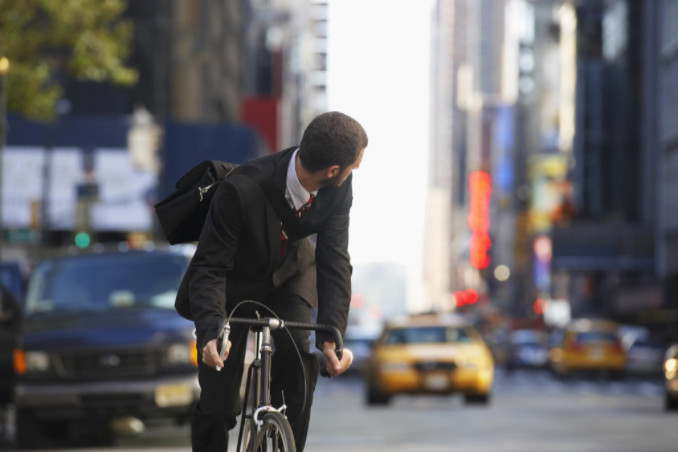Even when bicycles are not in the equation, the subject of right of way is debatable, and accidents due to misunderstandings of the rules are all too common.

These misunderstandings are even greater when it comes to cyclists.
The fact is, many drivers are not at all familiar with the rights of bicyclists, especially when it comes to right of way. This is becoming an increasing problem in larger cities or areas where bicyclists are common on roadways.
Becoming informed on what to do in a situation where a bicycle may receive the right of way could easily save a life, especially since bicyclists are vulnerable.
Dangerous Intersections
Bicycles are considered “vehicles” when it comes to traffic laws and the rules of right of way. That means that bicycles can both receive and give up the right of way depending on the specific traffic situation at hand.
Intersections are the most common location for serious bicycle accidents. Around 45% of collision bicycle accidents take place at intersections, often due to a lack of clarity as to who has the right of way.
As always, at a signaled intersection, the vehicle (car or bicycle) that is signaled to go has the right of way. However, at intersections without signals the rules of right of way are not as clear-cut:
- Whichever party does not have a stop sign in its lane will have the right of way.
- If both the car and the bicycle have stop signs, the vehicle that approaches the intersection and stops first will have the right of way after the other vehicle stops.
- If both vehicles stop at the stop signs at the same time, whichever vehicle is on the right will have the right of way. Example: The driver of the stopped car has a bicyclist to her right that stopped at the same time. She must yield the right of way to the bicyclist.
Other Traffic Situations
Because bicycles are considered vehicles when it comes to the rules of the road, they must also observe the rules of yield signs and merging into oncoming traffic.
A bicycle parked at a yield sign must surrender the right of way to any traffic present on the existing road. In addition, merging into traffic from another street, in a parking lot or onto a highway requires giving existing traffic the right of way. This is true for both cars and bicycles.
In addition, the right of way must always be given to pedestrians, whether you are operating a vehicle or a bicycle. Even if a pedestrian is acting outside the rules, it’s important to surrender the right of way.
Who is Liable?
Liability in a collision between a car and a bicycle is usually determined based on which party had the right of way and the type of intersection at which the accident occurred. However, other conditions may come into play, including one party being unaware of the other or driver negligence. In this case, liability goes to whichever party was acting recklessly.
Avoiding Bicycle Accidents
Sometimes avoiding an accident is impossible, but taking certain steps can decrease your chances:
- Never assume that you will be given the right of way. Always make sure the other party intends on yielding before heading into traffic.
- Be aware of your surroundings. By failing to check blind spots or look both ways, you may not see a bicyclist riding next to you.
- For bicyclists: make visibility a priority. It’s the best defense against a potentially hazardous situation.
If you or someone you know has been the victim of a bicycle accident, make sure you have an experienced Tampa bicycle accident lawyer on your side. Contact the attorneys at Lorenzo & Lorenzo today for a free consultation of your case.






